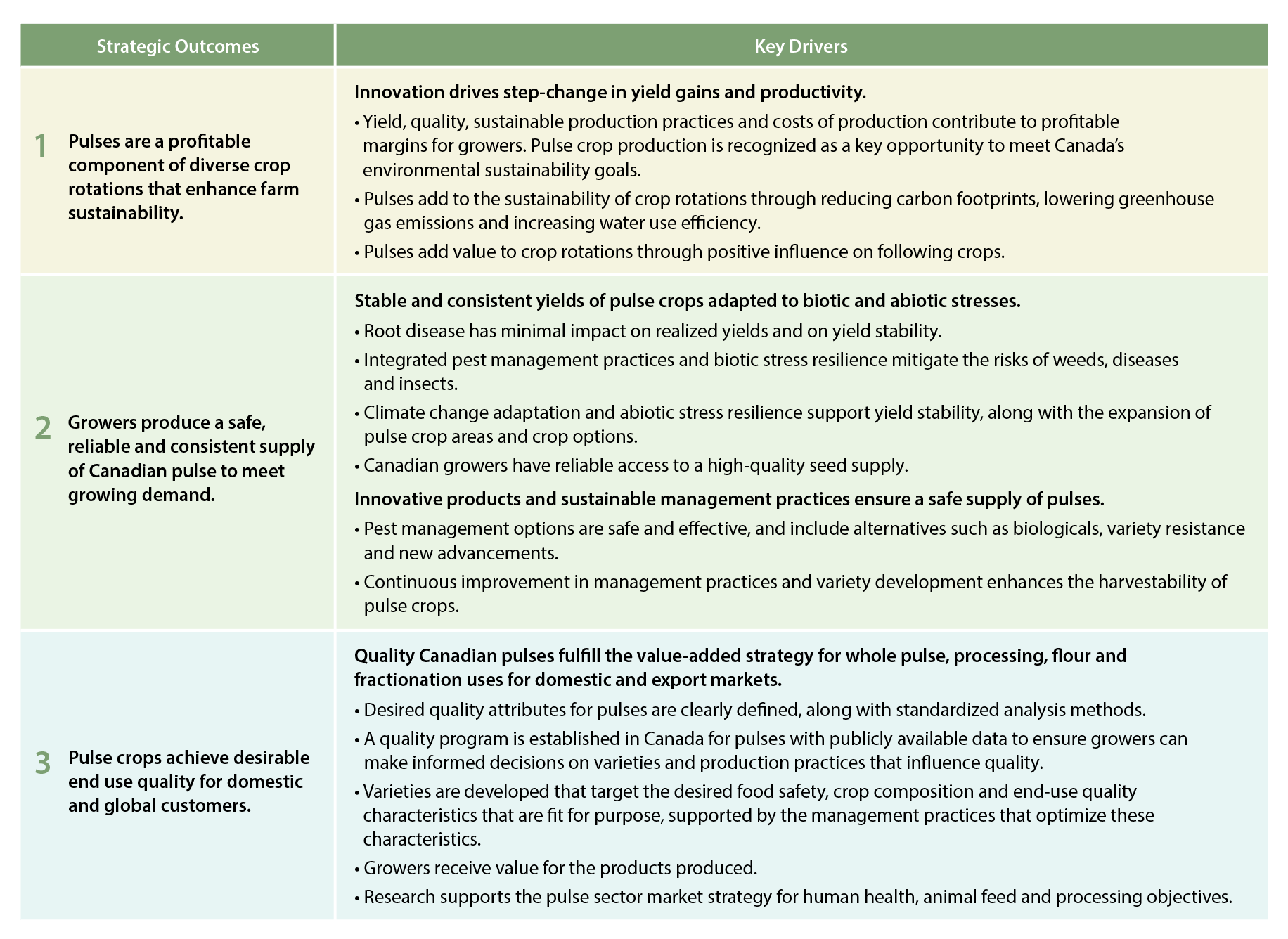Daryl Domitruk, Executive Director and Cassandra Tkachuk, Research Specialist, MPSG – Spring 2022 Pulse Beat
MPSG IS A team player when it comes to research. We know our limitations in terms of funding research. We need partners who share our goals to improve the profitability of pulses. We also know what we need specifically in our province to propel pulses forward. Fortunately, this is familiar terrain for Pulse Canada and our sister provincial pulse groups across the country. There’s a strong collaborative spirit among pulse groups. We respect each other’s unique circumstances but are still able to arrive at consensus about what is good for Canada. We know a roadmap can be valuable when it comes to allocating finite research funds.
In 2021, pulse sector representatives from across Canada gathered to develop a National Pulse Research Strategy (NPRS) for field peas, dry beans, faba beans, lentils and chickpeas. The process to develop this strategy took place over several months and included interviews and a virtual strategy workshop in September 2021.
Articulating a national vision for pulse research is an important step in the coordination of research funding and programming to maximize efficiency, increase capacity and improve the ability to adopt new innovative technologies. Research and innovation will be key for Canada to remain competitive as a world leader in pulse production and take advantage of new markets and opportunities.
PURPOSE
The goal of this NPRS is to identify a medium- to long-term strategy, including national research priorities, to be used by the sector in the pursuit of research funding and to guide research investments. The scope of this strategy is all-encompassing for the pulse sector, from discovery to applied research.
VISION
- Pulses are a foundational choice for Canadian farms, human health, animal nutrition and environmental sustainability.
- Pulse research in Canada is on the forefront of new technology; it is nationally coordinated, collaborative and accelerates progress toward three strategic outcomes.
There are three strategic outcomes (see page 26) that make up the basis of this strategy. Then there are key drivers anticipated to be crucial in leading the progress toward each strategic outcome.
The group also identified a series of high-level research priorities that are linked to each of the strategic outcomes. Enabling activities that will accelerate the research progress and uptake of innovation along the value chain were also outlined as part of the strategy.
For strategic outcome 1, research priority examples include increasing the yield potential and profitability of pulse crops through variety development, adoption of breeding innovations (e.g., development of traits that reduce the cost of production, like N-fixation or pest resistance) or expanding the adaptability of pulse crops to achieve sustainable production on every hectare of land (e.g., yield stability under variable environmental conditions).
Examples of research priorities linked to strategic outcome 2 include prevention or mitigation of damage from root diseases through a national, coordinated and focused approach (e.g., genetic resistance of peas to Aphanomyces and Fusarium sp.) or the identification of alternative control options for pests that reduce the reliance on pesticide.
Research priority examples linked to strategic outcome 3 include the development of a national quality testing system and market-specific quality goals (e.g., for current and emerging pulse ingredient uses) or monitoring and management of food safety contaminants to meet quality targets and maintain market access. ■



